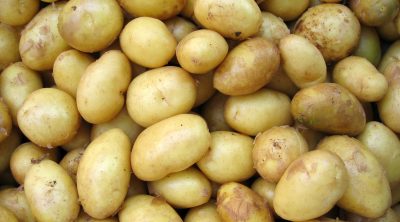When I was learning to cook, everything had to go through my mother. She’d comment on the ingredients, the seasoning, even the presentation. She was very particular when it came to slicing things.
Now, my mom grew up in a large, poor household. “More slices mean more mouths fed, so do it thinner,” she’d say. It led me to naturally, gradually learn how to slice thin.
Contents
- Can you slice meat thinly without a meat slicer?
- What’s the first thing you need to get thin meat slices?
- How do you know if a knife is “sharp enough”?
- How do you maintain your knife’s sharp edge?
- Do you need a cutting board to cut meat?
- Is there a technique for slicing raw meat?
- What are some things to remember when slicing cooked meat?
- How thin is thin enough?
Can you slice meat thinly without a meat slicer?
Yes! The most important thing to have would be a sharp knife, partnered along with a wooden cutting board. These two things will help you go a long way when slicing thin. For your raw meats, you can stash them in the freezer for about thirty minutes just to make them cold and firm before slicing into them.
This makes the meat more stable to slice. Easier slicing for you! For cooked meat, remember to let the meat rest. This will help the juices settle and help you with the temperature. If you’re worried about your slices, remember: as thin as you can, but a quarter-inch would do!
What’s the first thing you need to get thin meat slices?
You need a knife to slice meat. Obvious, right? Well, you need something more specific than that. You need a sharp knife. The best type of knife to use would be a butcher’s knife, but that’s a little uncommon in most households.
If you don’t have access to a butcher’s knife, a chef’s knife would do. You just have to make sure that the knife is sharp. The sharper the better. A long knife would also help because you generally want to slice in long strokes.
Just imagine yourself trying to slice meat, never mind the thickness, with a dull knife. Just thinking about it is annoying. But imagine you’re slicing through meat like a hot knife through butter. That’s what you’d get with a sharp knife.
In the kitchen, safety comes first. You’re safer when using a sharp knife than a dull knife. Think about cutting into something slippery such as an apple. Using a dull knife, two things might happen. You might get lucky and cut into the apple, or you might be unfortunate and it slips.
It might hit your hand holding the apple. With a sharp knife, you greatly minimize the risk of that kind of situation. Remember: keep your knife sharp and maintain good knife-handling practices.
How do you know if a knife is “sharp enough”?
There are a lot of (fun and dangerous) tests to see the sharpness of your knife. The easiest, simplest way to test for sharpness is to gently run your knife down a piece of paper.
Try to run the whole length of the knife, from base to the point. If your knife finds some difficulty or resistance, you might need to look into honing or sharpening your knife.
How do you maintain your knife’s sharp edge?
You hone it with a honing steel. You might have seen Gordon Ramsay using one of these vigorously in some of his videos. This does not sharpen your knife. To sharpen your knife, you’d need something like a knife sharpener or a whetstone.
What happens when a knife gets dull? Two reasons. One, the sharp edge has been worn down, which can be fixed with sharpening. Two, the blade’s edge is no longer aligned properly, which can be fixed with honing.
Sharpening is a process that removes material from your blade, so too much sharpening could wear your knife down. Honing pushes the knife’s edge back into alignment, in a process called “folding back the burr.” Ideally, you will hone your knife before and after every use, and sharpen it once or twice a year.
Do you need a cutting board to cut meat?
Absolutely. If you don’t have a cutting board, you might be cutting into your counter or whatever you’re using to cut food against. A wooden cutting board would be best because it would help grip the meat more than a plastic or glass cutting board will.
This can make your slices more precise because the meat would not move or slip as much.
Is there a technique for slicing raw meat?
Yes. Cold meat is easier to slice than, say, meat that had sat for a while at room temperature. When meat is cold, it becomes stiff. The firmness from the temperature of the meat helps it become easier to slice, and at the same time prevents it from sliding as you slice.
This should go without saying, but frozen meat will refuse to be sliced, so make sure you have the right amount of cold or thaw if you’re doing this. In general, thirty minutes in the freezer would do, but you’ll get a better feel for it with experience.
What are some things to remember when slicing cooked meat?
Before you get into the exciting act of slicing your cooked meat, make sure to let it rest. This will help the meat’s juices to settle so less juice will spill when you slice, as well as cool the meat down to make it safe for you to handle when you start slicing.
Make sure to clean your cutting board as well, to avoid cross-contamination. If you’re handling a large chunk of meat, for example, roast beef, you might need something like a carving fork to help you slice.
Before you slice, try to lightly grip the knife, instead of doing a tight, tense grip. Your knife should be sharp enough and the meat tender enough to not necessitate a tense grip. When you do get to slicing, make sure to slice against the grain of the meat to avoid breaking the meat.
How thin is thin enough?
When it comes to thinly sliced meats, as thin as you possibly can. Of course, this depends on what meat you’re handling, but generally, if you can get it to a quarter-inch, you’re a-ok. You might even get my mom’s approval.
All these are things that can help you slice meat thinly, and they work well combined. One thing you cannot buy or read about is to practice and experience, so go have fun slicing things in your kitchen! May these tips help you into meat slicer-less mastery.







Leave a Reply